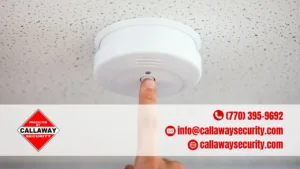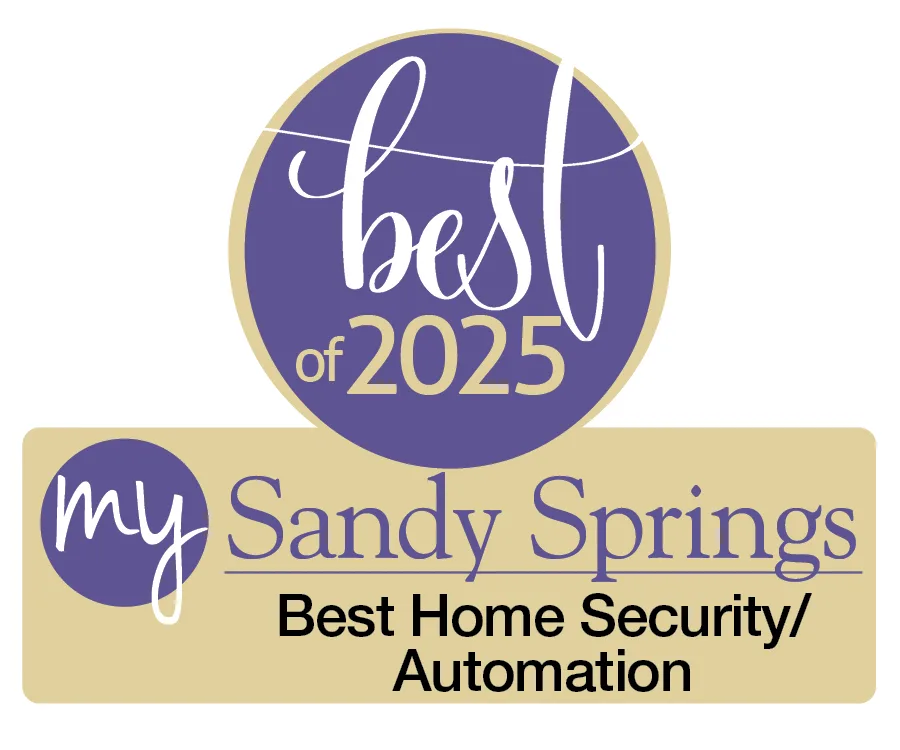Smart homes refer to houses that are equipped with advanced automation systems that can control various aspects of the home, such as lighting, heating, ventilation, air conditioning, appliances, and security systems. Automation, on the other hand, involves the use of technology to perform tasks automatically without human intervention. The concept of smart homes and automation has been around for decades, but it is only in recent years that it has gained significant popularity and widespread adoption.
The idea of smart homes can be traced back to the early 20th century when inventors and visionaries began imagining a future where technology would make our lives easier and more convenient. However, it was not until the 1970s that the first true smart home system was developed. The “ECHO IV” system, created by Jim Sutherland, allowed homeowners to control their appliances and security systems using a central computer.
Key Takeaways
- Smart homes and automation are becoming increasingly popular as technology advances.
- Smart home technology has evolved from simple remote controls to complex systems that can be controlled from anywhere.
- Automation in smart homes offers benefits such as convenience, energy efficiency, and improved security.
- Artificial intelligence plays a crucial role in smart homes, allowing for personalized experiences and predictive capabilities.
- Smart home security is essential for protecting privacy and ensuring safety.
The Evolution of Smart Home Technology
Early smart home technology was limited in its capabilities and accessibility. It was expensive and required specialized knowledge to install and operate. However, advancements in technology over the years have made smart home systems more affordable, user-friendly, and widely available.
In the 1990s, the concept of home automation gained momentum with the introduction of X10 technology. X10 allowed homeowners to control their lights and appliances using powerline communication, which transmitted signals through existing electrical wiring. This technology paved the way for further advancements in smart home automation.
In recent years, there has been a rapid growth in smart home technology. The rise of smartphones and wireless connectivity has made it easier than ever for homeowners to control their smart devices from anywhere in the world. Companies like Amazon, Google, and Apple have also entered the market with their voice-activated virtual assistants, which have further simplified the process of controlling smart devices.
The Benefits of Automation in Smart Homes
Automation in smart homes offers a wide range of benefits to homeowners. One of the main advantages is convenience and comfort. With automation, homeowners can control various aspects of their homes with just a few taps on their smartphones or through voice commands. They can adjust the temperature, turn on/off lights, lock/unlock doors, and even start appliances remotely.
Another significant benefit of automation is energy efficiency. Smart home systems can monitor and optimize energy usage, resulting in lower utility bills and reduced environmental impact. For example, smart thermostats can learn the homeowners’ preferences and adjust the temperature accordingly, saving energy when no one is at home.
Automation also enhances security and safety in smart homes. Homeowners can install smart security systems that include surveillance cameras, motion sensors, and door/window sensors. These systems can send real-time alerts to homeowners’ smartphones in case of any suspicious activity or breaches. Additionally, automation can simulate occupancy by turning lights on/off at random intervals when homeowners are away, giving the impression that someone is home.
Lastly, automation can lead to cost savings in the long run. While the initial investment in smart home technology may be higher compared to traditional systems, the energy savings and increased efficiency can result in significant cost savings over time. Additionally, automation can help prevent costly damages by detecting leaks or malfunctions early on.
The Role of Artificial Intelligence in Smart Homes
Artificial intelligence (AI) plays a crucial role in smart homes by enabling devices to learn from user behavior and make intelligent decisions. AI refers to the simulation of human intelligence in machines that are programmed to think and learn like humans.
In smart homes, AI is used to analyze data from various sensors and devices to understand user preferences and patterns. This allows the system to anticipate the homeowners’ needs and adjust settings automatically. For example, an AI-powered smart thermostat can learn the homeowners’ temperature preferences and adjust accordingly without any manual input.
AI is also used in voice-activated virtual assistants, such as Amazon’s Alexa, Google Assistant, and Apple’s Siri. These assistants use natural language processing and machine learning algorithms to understand and respond to user commands. They can control various smart devices in the home, answer questions, provide information, and even perform tasks like ordering groceries or playing music.
Examples of AI in smart homes include smart lighting systems that adjust brightness based on the time of day and occupancy patterns, AI-powered security systems that can differentiate between normal activity and potential threats, and AI-powered appliances that can learn usage patterns and optimize energy consumption.
Smart Home Security: Enhancing Safety and Privacy
Smart home security is a critical aspect of automation as it ensures the safety and privacy of homeowners. With the increasing number of connected devices in homes, the risk of cyber-attacks and privacy breaches has also grown.
To enhance security, homeowners can install various smart home security systems. These systems include surveillance cameras, motion sensors, door/window sensors, and smart locks. Surveillance cameras can provide real-time video feeds to homeowners’ smartphones, allowing them to monitor their homes remotely. Motion sensors and door/window sensors can detect any unauthorized entry and send alerts to homeowners’ smartphones.
Privacy concerns are also a significant consideration in smart homes. With the increasing number of connected devices, there is a potential for personal data to be collected and shared without the homeowners’ knowledge or consent. To address these concerns, homeowners should ensure that their smart devices are secure by using strong passwords, regularly updating firmware/software, and only purchasing devices from reputable manufacturers.
The Integration of IoT in Smart Homes
The Internet of Things (IoT) refers to the network of physical devices embedded with sensors, software, and connectivity that enables them to exchange data over the internet. In smart homes, IoT is used to connect various devices and enable them to communicate with each other.
IoT in smart homes allows for seamless integration between different devices and systems. For example, a smart thermostat can communicate with a smart lighting system to adjust the temperature and lighting based on occupancy patterns. IoT also enables homeowners to control their smart devices remotely through their smartphones or voice commands.
Examples of IoT in smart homes include smart appliances that can be controlled and monitored remotely, such as refrigerators that can send alerts when groceries are running low or washing machines that can be started or stopped from anywhere. IoT is also used in home automation hubs, which act as a central control system for all connected devices in the home.
Advancements in Voice Recognition Technology for Smart Homes
Voice recognition technology is another significant advancement in smart home automation. It allows homeowners to control their smart devices using voice commands, making the interaction more natural and intuitive.
Voice recognition technology uses natural language processing algorithms to understand and interpret spoken commands. It has become increasingly accurate and reliable over the years, thanks to advancements in machine learning and A
In smart homes, voice recognition technology is used in virtual assistants like Amazon’s Alexa, Google Assistant, and Apple’s Siri. These assistants can control various smart devices in the home, answer questions, provide information, and perform tasks like setting reminders or playing music.
Examples of voice recognition technology in smart homes include controlling lights, adjusting thermostats, playing music, ordering groceries, and even making phone calls. Voice recognition technology has made it easier than ever for homeowners to interact with their smart devices without the need for physical input.
Smart Home Energy Management: Reducing Energy Consumption
Energy management is an essential aspect of smart homes as it allows homeowners to reduce their energy consumption and lower their utility bills. Smart home energy management systems use automation and data analysis to optimize energy usage and increase efficiency.
Smart thermostats are one of the most popular energy management devices in smart homes. They can learn the homeowners’ temperature preferences and adjust accordingly to save energy when no one is at home. They can also be controlled remotely, allowing homeowners to adjust the temperature before they arrive home.
Other energy management devices include smart lighting systems that can automatically turn off lights when no one is in the room, smart power strips that can detect when devices are in standby mode and cut off power to save energy, and smart appliances that can optimize energy consumption based on usage patterns.
The benefits of smart home energy management include reduced utility bills, increased energy efficiency, and reduced environmental impact. By optimizing energy usage, homeowners can save money and contribute to a more sustainable future.
The Future of Smart Home Automation: Predictions and Trends
The future of smart home automation looks promising, with several predictions and emerging trends shaping the industry. One prediction is the increased integration of AI and machine learning in smart home systems. AI will enable devices to learn from user behavior and make intelligent decisions, further enhancing convenience and efficiency.
Another trend is the increased adoption of voice-activated virtual assistants. As voice recognition technology becomes more accurate and reliable, homeowners will rely more on voice commands to control their smart devices. Virtual assistants will become even more integrated into our daily lives, providing personalized recommendations and performing tasks on our behalf.
The emergence of 5G technology is also expected to have a significant impact on smart homes. With faster and more reliable internet connectivity, homeowners will be able to control their smart devices remotely with minimal latency. This will open up new possibilities for automation and connectivity in smart homes.
Challenges and Limitations of Smart Home Automation
While smart home automation offers numerous benefits, there are also challenges and limitations that need to be addressed. One challenge is the interoperability of different devices and systems. With so many manufacturers producing smart devices, ensuring compatibility between different brands can be a challenge. Standardization efforts are underway to address this issue.
Another challenge is the potential for cyber-attacks and privacy breaches. As more devices become connected, the risk of unauthorized access and data breaches increases. Manufacturers need to prioritize security and privacy in their smart devices to protect homeowners’ personal information.
The limitations of current smart home technology include the reliance on internet connectivity. If the internet goes down, homeowners may lose control over their smart devices. Additionally, the initial cost of smart home technology can be a barrier for some homeowners, although prices have been decreasing over time.
To overcome these challenges and limitations, manufacturers and industry stakeholders need to work together to develop secure and interoperable smart home systems. Governments can also play a role by implementing regulations and standards to ensure the security and privacy of smart home technology.
Smart homes and automation have come a long way since their inception. Advancements in technology have made it easier than ever for homeowners to control various aspects of their homes with just a few taps on their smartphones or through voice commands. Automation offers numerous benefits, including convenience, energy efficiency, increased security, and cost savings.
Artificial intelligence plays a crucial role in smart homes by enabling devices to learn from user behavior and make intelligent decisions. Voice recognition technology has also revolutionized the way we interact with our smart devices, making it more natural and intuitive.
The future of smart home automation looks promising, with predictions of increased integration of AI, the adoption of voice-activated virtual assistants, and the emergence of 5G technology. However, there are also challenges and limitations that need to be addressed, such as interoperability issues and security concerns.
Overall, smart homes and automation have the potential to transform our lives by making our homes more convenient, efficient, and secure. As technology continues to advance, we can expect even more exciting developments in the future.
FAQs
What is automation in smart homes?
Automation in smart homes refers to the use of technology to control and automate various household tasks and functions, such as lighting, heating, security, and entertainment systems.
What are the benefits of automation in smart homes?
Automation in smart homes offers several benefits, including increased convenience, improved energy efficiency, enhanced security, and greater control over household functions.
What are some examples of automation in smart homes?
Examples of automation in smart homes include voice-activated assistants, smart thermostats, automated lighting systems, smart locks, and home security systems.
What advancements have been made in automation for smart homes?
Advancements in automation for smart homes include the integration of artificial intelligence and machine learning, the development of more sophisticated voice-activated assistants, and the use of sensors and other technologies to improve energy efficiency and security.
What are some potential concerns with automation in smart homes?
Potential concerns with automation in smart homes include privacy and security risks, the potential for technology malfunctions, and the possibility of increased energy consumption if not properly managed.












